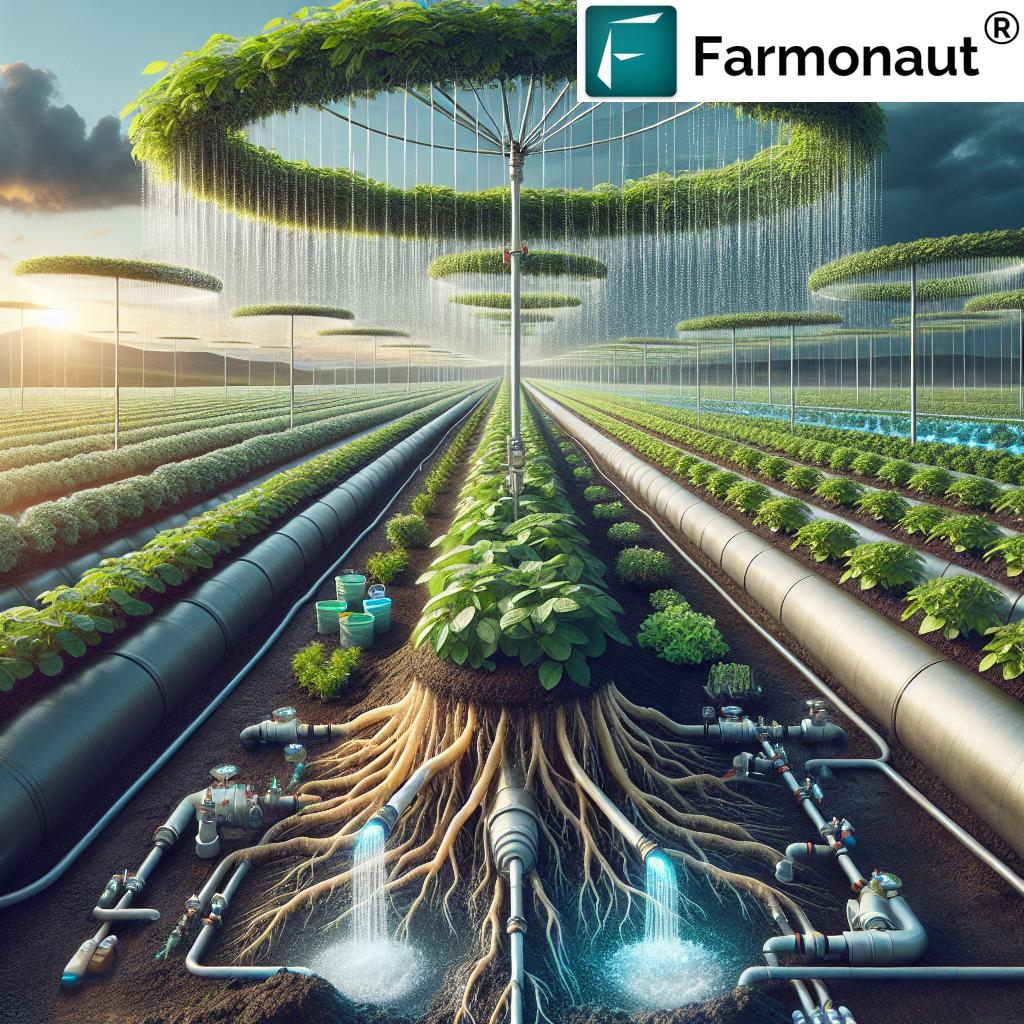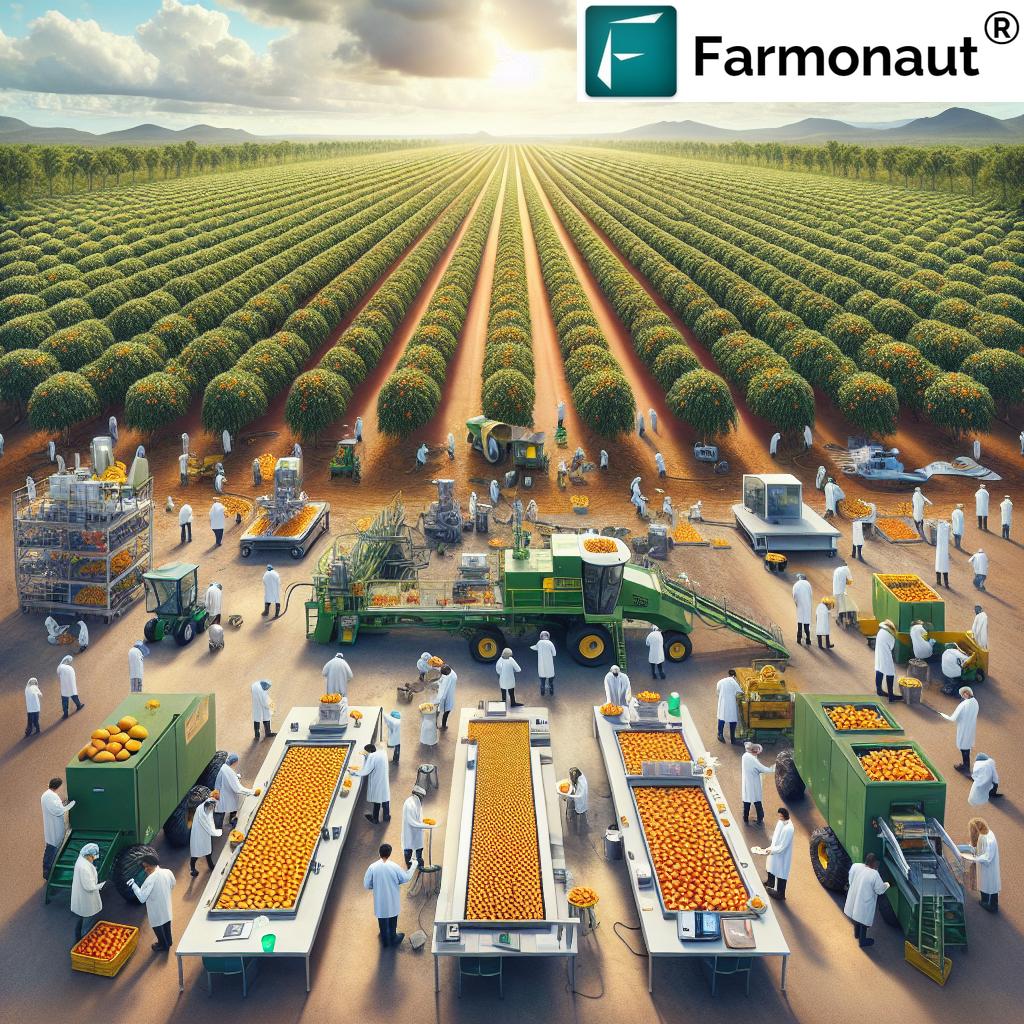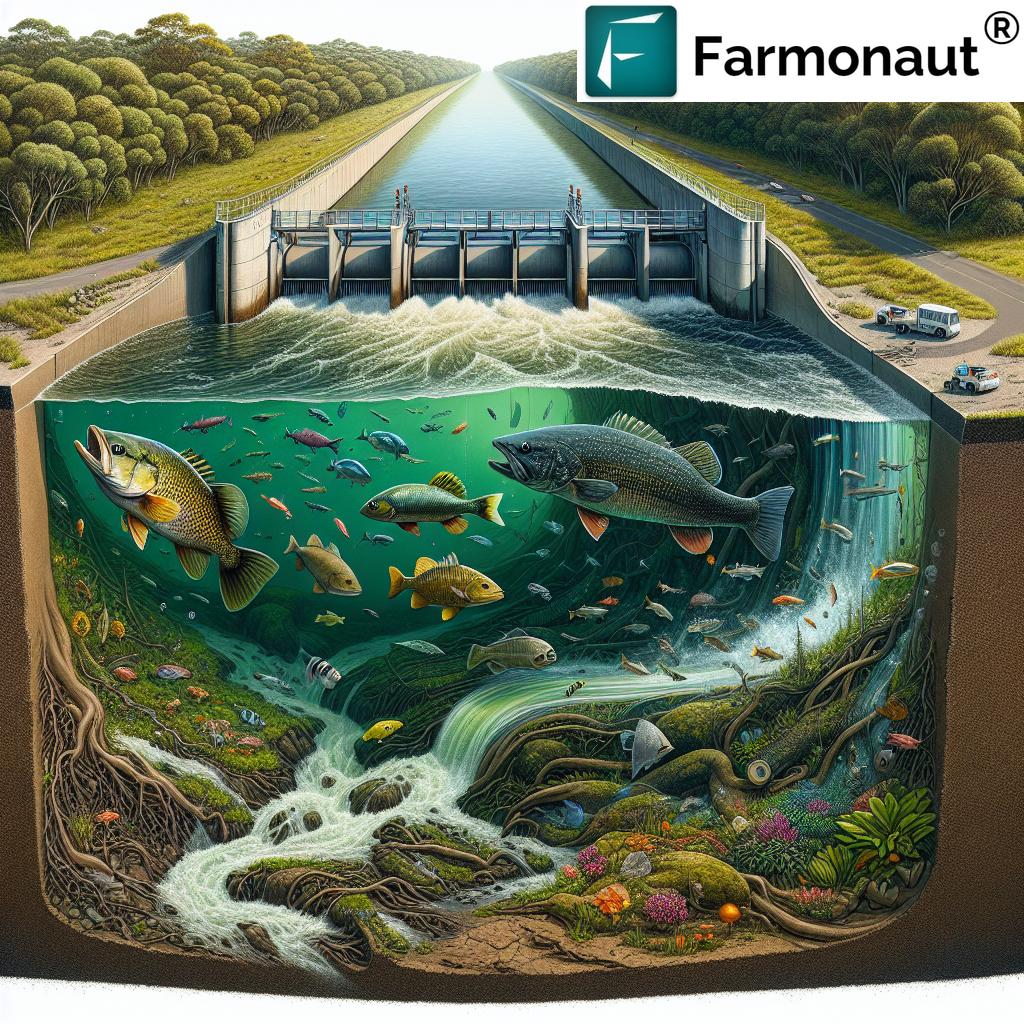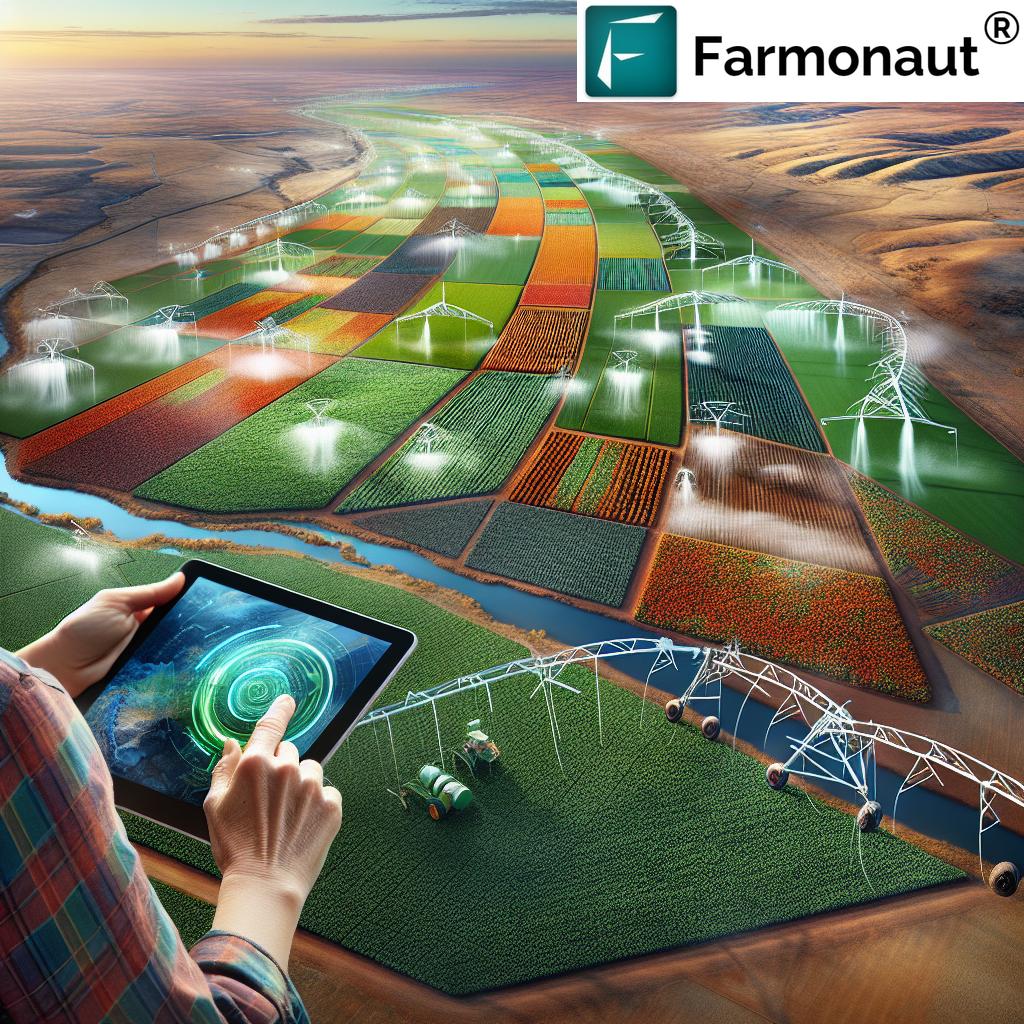Table of Contents
- Introduction: Sustainable Agriculture Australia
- Trivia: Scale of Regenerative Agriculture
- 7 Shocking Innovations in Sustainable Agriculture Australia
- Comparative Innovations Impact Table
- Government Policy and Support for Sustainability
- Farmonaut: Powering Australia’s Climate-Smart Agriculture
- Challenges and Future Directions for Sustainable Agriculture Australia
- FAQs: Sustainable Agriculture in Australia
- Conclusion
Sustainable Agriculture Australia: 7 Shocking Innovations
“Australia’s regenerative agriculture covers over 13 million hectares, pioneering eco-friendly farming on a massive scale.”
As stewards of one of the world’s most ecologically diverse terrains, we are witnessing an extraordinary transformation in sustainable agriculture Australia. From tackling the relentless aridity of the Outback to managing the fragility of the nation’s topsoil, Australia’s farmers are championing innovations that blend technology, tradition, and environmental consciousness. In this post, we’ll uncover seven shocking and game-changing practices—spanning precision agriculture, water management strategies, regenerative agriculture techniques, and more—that define Australia’s approach to sustainable food security, ecological balance, and climate resilience.
We’ll also explore how Farmonaut is empowering Australian farmers with satellite-based monitoring, AI-driven advisories, blockchain for traceability, and tools to support decision-making—all aimed at maximizing productivity and environmental stewardship.
7 Shocking Innovations in Sustainable Agriculture Australia
What makes sustainable agriculture in Australia unique is the breadth and depth of its innovative farming practices. Let’s explore these seven game-changing approaches driving productivity, resilience, and environmental stewardship across Australia’s farming, forestry, and agricultural sectors.
1. No-Till Farming Revolution
No-till farming, a pioneering method in Australian agriculture, means planting crops without the need for traditional tillage. Instead of turning over the topsoil, planted seeds are placed directly into undisturbed soil. This method helps maintain soil structure, reduce erosion, and increase water retention. Such benefits are critical given Australia’s arid regions and variable rainfall patterns.
- 79% of Australia’s crop land used no-till practices by 2017.
- This approach reduces carbon loss, helps increase soil carbon sequestration, and minimizes water runoff.
- It requires fewer passes with farm equipment, which means lower fuel consumption—further reducing environmental impact.
By adopting no-till, we support sustainability and improve yields while preserving Australia’s precious soil health.
2. Precision Agriculture Technologies
At the core of climate-smart agriculture Australia is precision agriculture. By leveraging GPS-guided tractors, drones, and soil sensors, we can target the exact application of water, fertilizers, and pesticides on our farms. This data-driven strategy:
- Reduces resource waste and improves efficiency
- Minimizes environmental impact of chemical use
- Boosts crop yields and profitability
As one of Australia’s most transformative agricultural techniques, precision agriculture technologies empower us to monitor soil and crop health in real time.
With affordable, accessible tools from Farmonaut, even medium and small-scale farmers can now join the movement, making smarter, quicker decisions for sustainable agriculture Australia.
Explore Fleet & Resource Management for large farms:
Enhance operational efficiency with Farmonaut’s fleet management tools—optimize vehicles, track equipment, and reduce wastage on Australian farmlands.
Looking to track and optimize carbon impact?
Farmonaut’s carbon footprinting solution monitors and reduces emissions for compliance and sustainability.
3. Agroforestry Benefits Australia
Agroforestry—the integration of trees into cropping or grazing systems—is increasingly reshaping sustainable agriculture Australia. By merging forestry and agriculture, we unlock:
- Enhanced biodiversity and habitat for native species
- Improved soil health by reducing erosion and increasing organic matter
- Efficient carbon sequestration across large areas of farmland
- Windbreaks and shelterbelts, protecting crops from wind damage and supporting year-round productivity
Shelterbelts are rows of trees or shrubs planted to shield agricultural fields from strong winds. In Western Australia and the Riverina, these shelterbelts reduce land degradation and support ecosystem health.
Agroforestry’s array of environmental and financial benefits has made it a flagship of resilient Australian farming.
Discover how to combine agroforestry and tech for smarter land management:
Farmonaut’s large scale farm management platform provides integrated insights for plantation, resource allocation, and sustainability.
4. Drip Irrigation for Australian Farms
Given Australia’s arid regions and frequent droughts, efficient water management strategies in farming are the difference between success and crisis. Drip irrigation is a highly efficient technique that delivers water directly to roots. This approach:
- Reduces evaporation and runoff, especially in hot, dry areas
- Conserves water—one of our scarcest agricultural resources
- Ensures uniform, adequate moisture for each plant
- Uses between 30–70% less water than traditional sprinkler or flood approaches
With increasing support for drip irrigation for Australian farms, more producers are able to harvest abundant, healthy crops despite irregular rainfall.
“Innovative water management in Australia has reduced irrigation use by up to 30% in some sustainable farming regions.”
Unlock smart irrigation management:
Get real-time soil moisture and crop health data with Farmonaut’s satellite-based monitoring tools—helping cut water usage while increasing yield and sustainability.
5. Rainwater Harvesting Strategies in Australian Agriculture
With the frequency of droughts and reduced rainfall, harvesting rainwater has become a necessity for sustainable Australian farming. Rainwater harvesting refers to collecting and storing rainwater—on rooftops, in dams, or in underground tanks—for use during dry spells.
- Mitigates drought impacts and ensures consistency of water supply
- Lowers dependence on groundwater and reduces stress on rivers/aquifers
- Supports food security by stabilizing crop yields
By integrating rainwater storage systems with efficient irrigation, we strengthen resilience and sustainability.
Tip: Satellite monitoring (as with Farmonaut) can help calculate catchment efficiency, predict future availability, and optimize use.
6. Regenerative Agriculture Techniques
Regenerative agriculture is a holistic approach that goes beyond sustainability—it actively rebuilds soil organic matter, restores biodiversity, and increases carbon sequestration in agriculture.
- Minimal-tillage (minimal disturbance of soil)
- Cover cropping—planting crops to protect and nourish the soil during off-seasons
- Rotational grazing for livestock, preventing overgrazing and boosting land fertility
- Natural composting to enrich the soil and reduce dependency on chemical inputs
- Focus on ecosystem health as well as farm profitability
Such regenerative agriculture techniques have become a cornerstone of sustainable agriculture Australia, helping us in both adaptation (to climate change) and mitigation (of greenhouse gas emissions).
Interested in sustainable practices with full traceability? Check Farmonaut’s blockchain-based traceability solution—proving product authenticity from farm to consumer and promoting transparency in Australian supply chains.
7. Microbial Soil Enhancements: Next-Level Soil Health Management
Soil is a living resource, teeming with microbes, fungi, and other organisms essential for agricultural productivity. Companies such as Loam Bio now offer microbial spore supplements—these “engineered” microbes supercharge soil health management by:
- Increasing natural soil carbon storage
- Improving soil structure, moisture retention, and fertility
- Reducing reliance on chemical fertilizers, further supporting climate mitigation
With microbial soil enhancements, we’re turning the world beneath our feet into a vital ally in the fight against climate change. Satellite-based monitoring (like that by Farmonaut) can track soil health improvements and quantify environmental benefits.
Comparative Innovations Impact Table: Sustainable Agriculture Australia
| Innovation Name | Description | Estimated Implementation Cost (AUD/ha) | Expected Environmental Benefit | Estimated Adoption Rate in Australia (%) |
|---|---|---|---|---|
| No-Till Farming | Direct planting with no tillage, preserving soil structure & reducing erosion | $30–$100 | Reduces soil erosion by 90%, increases water retention, boosts soil carbon | 79% |
| Precision Agriculture Tech | Use of GPS, drones, and AI for resource-aware input and monitoring | $150–$450 | Cuts input waste by 25%, reduces emissions, improves crop yields by up to 20% | 36% |
| Agroforestry | Integrating trees into farms for wind protection & biodiversity | $90–$200 | Enhances biodiversity by up to 50%, sequesters carbon, reduces wind damage | 15% |
| Drip Irrigation | Water delivered directly to plant roots, saving water in arid regions | $600–$1,500 | Reduces water consumption by 30–70%, minimizes runoff & evaporation | 21% |
| Rainwater Harvesting | Collects/stores rain for drought-proof irrigation & livestock | $50–$700 | Mitigates drought impact, reduces runoff & demand on aquifers | 31% |
| Regenerative Techniques | Cover crops, crop rotation, rotational grazing & minimal tillage | $20–$90 | Increases soil organic matter by 20%, enhances fertility & sequestration | 29% |
| Microbial Soil Enhancements | Application of beneficial microbes to improve soil function/carbon | $35–$120 | Boosts soil carbon storage, improves plant health & growth | 7% |
Government Policy and Support for Sustainability
Achieving sustainability across Australian agriculture requires coordinated support, policy action, and community engagement. Several initiatives form the backbone of this national shift:
-
Sustainable Agriculture Facilitators (SAFs):
Australia’s government has invested over $40 million in SAFs—dedicated experts providing one-on-one support and advisories to farmers in 52 regions. SAFs help with climate-smart adaptation, promoting the adoption of regenerative, low-input, and sustainable farming. -
Natural Heritage Trust (NHT):
Since 1997, the NHT has provided vital funding for environmental programs that boost sustainable land and resource use, support biodiversity, and promote soil and water health. NHT’s resource allocation and grant programs underpin numerous on-ground projects. -
Climate-Smart Policy Integration:
Australian government policy increasingly integrates ecological stewardship, economic viability, and social responsibility for agriculture’s future. Policy frameworks, financial incentives, and targeted training are being adopted to accelerate the transition.
We also recommend exploring Farmonaut’s API for integrating advanced climate and soil monitoring directly into farm or research platforms. View API Developer Docs for more details.
Farmonaut: Powering Australia’s Climate-Smart Agriculture
Farmonaut is paving the way for an affordable, scalable, and accessible future in sustainable agriculture Australia. Our mission is to enable every Australian farmer, agribusiness, and policymaker to leverage advanced precision agriculture technologies—from real-time satellite monitoring (NDVI, soil moisture, weather) to AI-driven crop advisory and blockchain-backed traceability.
- Satellite-based Crop Health Monitoring: Real-time insights on crop status, soil health, and irrigation needs. Ideal for decision making and reducing resource wastage without installing additional hardware.
- Jeevn AI Advisory System: Personalized farm support, weather predictions, and crop management recommendations, fully tailored for Australian farming contexts.
- Blockchain Product Traceability: Complete supply chain transparency for agri-produce traceability and consumer trust.
- Fleet & Resource Management: Optimize the productivity and sustainability of every vehicle, asset, or operation on the farm.
- Carbon Footprint Tracking: Monitor, record, and improve carbon emission reduction across large and small farm operations for long-term sustainability.
Whether you’re an individual grower, a large agribusiness, a government institution, or a food company prioritizing transparency, Farmonaut ensures your journey toward sustainable agriculture Australia is data-driven and future-proof.
Ready to experience the simplest way to integrate satellite data with your farming?
- Open Farmonaut Web & Mobile App
- Monitor Carbon Emissions, Stay Sustainable
-
Get Crop Loan & Insurance Verification via Satellite
—Fast, secure, and trusted by Australian financial institutions
Challenges and Future Directions for Sustainable Agriculture Australia
Despite these significant advances, Australian farmers and the surrounding sectors face several ongoing challenges in their quest for sustainability:
- Climatic Uncertainty: Variable rainfall and more frequent severe droughts due to climate change intensify the need for adaptation.
- Policy Concerns: According to a 2024 survey, 73% of farmers feel government policies often restrict rather than support agriculture, citing live export bans and complex water laws.
- Financial and Knowledge Barriers: Regenerative practices and innovative techniques may require new skills and upfront investment. Supportive mechanisms and incentives (such as premium payments for verified regenerative produce) are critical for widespread adoption.
- Efficient Scaling: Ensuring technologies like microbial soil enhancements, drip irrigation, and advanced monitoring are affordable and scalable across all farm sizes and remote regions.
- Ecological and Social Responsibility: Maintaining balance between productivity, natural system health, and community livelihoods.
The future of sustainable agriculture Australia lies in:
- Accelerated policy and financial support for regenerative, low-input, and climate-resilient approaches.
- Technology democratization—making precise, satellite- and AI-driven solutions like Farmonaut available to every grower, regardless of scale or location.
- Cross-sector collaboration among farmers, researchers, tech providers, and government agencies.
- Continued emphasis on soil health, water management strategies, and traceability for both productivity and environmental benefit.
-
Relevant Resources:
How Australia became a test bed for the future of farming
Microbes on the farm: a solution for climate change?
From field to the cloud: How AI is helping regenerative agriculture to grow
FAQs: Sustainable Agriculture in Australia
What is sustainable agriculture in Australia?
Sustainable agriculture Australia integrates economic viability, environmental stewardship, and social responsibility to ensure long-term productivity and ecosystem health across Australia’s farming and forestry sectors.
What are the main challenges for Australian farmers?
The biggest challenges include climatic uncertainty (drought, variable rainfall), complex policies, knowledge gaps, and access to finance for adopting regenerative and technological advancements.
Which farming practices have the greatest impact on sustainability?
No-till farming, precision agriculture, drip irrigation, regenerative techniques, and agroforestry provide the most significant economic and environmental benefits.
How can farmers access satellite monitoring?
The most accessible way is via platforms like Farmonaut. Simply sign up for the app (web, Android, iOS) for instant crop, soil, and water health monitoring—no extra hardware needed.
What is carbon sequestration in agriculture?
It is the process of trapping and storing atmospheric carbon within soil and biomass—key for climate change mitigation. Practices like regenerative farming and agroforestry supercharge this natural process in Australia.
How can I get support for regenerative or smart agriculture?
Connect with Sustainable Agriculture Facilitators in your region, review NHT-supported initiatives, or adopt actionable tech with Farmonaut’s management tools.
Is Farmonaut a machinery, farm input, or regulator platform?
No, Farmonaut is not a seller of farm machinery or inputs, nor a regulatory body. It provides affordable, app-based, satellite-driven monitoring, decision-making, and farm management solutions for anyone in agriculture.
Which is the best app for remote farm management in Australia?
Farmonaut is a leading choice for remote, multi-field, multi-crop management across all of Australia’s diverse agriculture regions—offering an easy, scalable solution for all farm sizes.
Conclusion: Shaping the Future with Sustainable Agriculture Australia
Sustainable agriculture Australia isn’t just about ecological or economic outputs—it’s about a shared vision for a resilient, thriving food system for generations to come. By adopting innovative farming practices, investing in water management strategies, prioritizing soil health management, supporting regenerative agriculture techniques, and enabling climate-smart agriculture with tools like Farmonaut, Australian farmers are planting the seeds for lasting food security, environmental health, and community prosperity.
Let us continue supporting, learning, and innovating—because every decision we make today shapes the sustainable, bountiful Australia of tomorrow.
For real-time insights, efficient management, and full traceability, empower your Australian farming journey with
Farmonaut’s sustainable agriculture solutions.
Get Started with Farmonaut Today


















